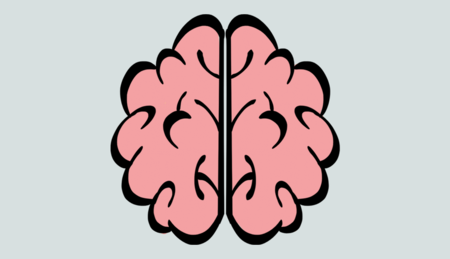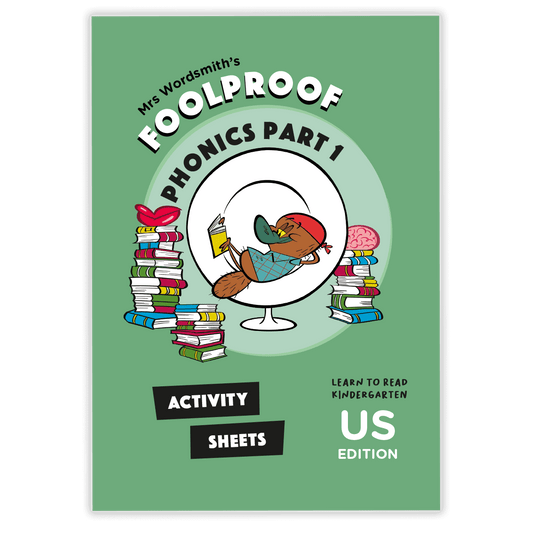The brain before we learn how to read
When we are born, the parts of the brain that process letters (the visual cortex) are disconnected from the parts of the brain that process sounds (the auditory cortex). At this stage, the brain is capable of understanding words it hears, but not words that it sees. In order to read words, a child’s brain needs to develop new neural networks that connect the visual cortex with the auditory cortex. It needs to connect the letter it “sees” to the sound it “hears”.
For example, when the visual cortex sees the letter f and the auditory cortex hears the sound ‘f’ as in ‘funny’, a new connection between the visual and auditory cortex is formed. Every time a child decodes a new word, a new connection between the visual cortex and the auditory cortex is formed.
The brain after it learns how to read through phonics
The ability to map letters to sounds has a significant impact on brain development. That’s why learning phonics helps build the neural networks required for fluent reading. Learning how to read develops new areas in the brain.
The process of decoding words or blending letters into words sends information to the letterbox, an area of the visual cortex that’s dedicated to written words. This area only develops when we are beginning to read. In fact, it doesn’t exist in very young children or illiterate adults. Information about the shapes of letters travels to the letterbox region of the brain from where it gets mapped onto information about sounds and meanings. The letterbox is also responsible for sophisticated tasks that are absolutely essential for a fluent reader such as acknowledging that BOOK and book is the same word, whether written in upper case, lower case, or handwritten. [1]
For a child who is learning how to read, the process of mapping letters to sounds is slow and laborious. With time, it becomes automatic. Learners need to encounter words again and again in order to start identifying them instantly, without having to decode each one letter by letter. But the process of associating letters to sounds that is achieved with phonics is much more beneficial for the brain of a reader than learning how to read via the whole word method.
The brain when learning how to read via the whole word method, rather than phonics
The whole word method is reading through learning by heart the form of a word as a whole. It doesn’t build the same circuitry between the learner’s auditory cortex and visual cortex. Readers without a knowledge of phonics have an underdeveloped ability to connect letters to sounds. And the important part of the reading brain that scientists call the letterbox doesn’t develop either. These readers do not reach the same level of automaticity and are underprepared to decode unfamiliar words when they encounter them, all of which has a significant impact on their reading fluency.
Studies have identified certain patterns of activity that occur in the left brain hemispheres of fluent readers. One study compared the neural activity of a fluent reader to the brains of people who were learning to read. They found that learners who used phonics to decode words showed high levels of activity in the left hemisphere of their brain, resembling activity in the brains of fluent readers. Learners who used the whole-word method showed no activity of this kind. [2] The science tells us that how we learn to read really matters.
Sources for further reading:
[1] Dehaene, S. (2013). Inside the Letterbox: How literacy transforms the human brain. Cerebrum, 7.
[2] Yoncheva, Y. N., Wise, J. McCandliss, B. (2015). Hemispheric specialization for visual words is shaped by attention to sublexical units during initial learning. Brain and Language, 145-146.







